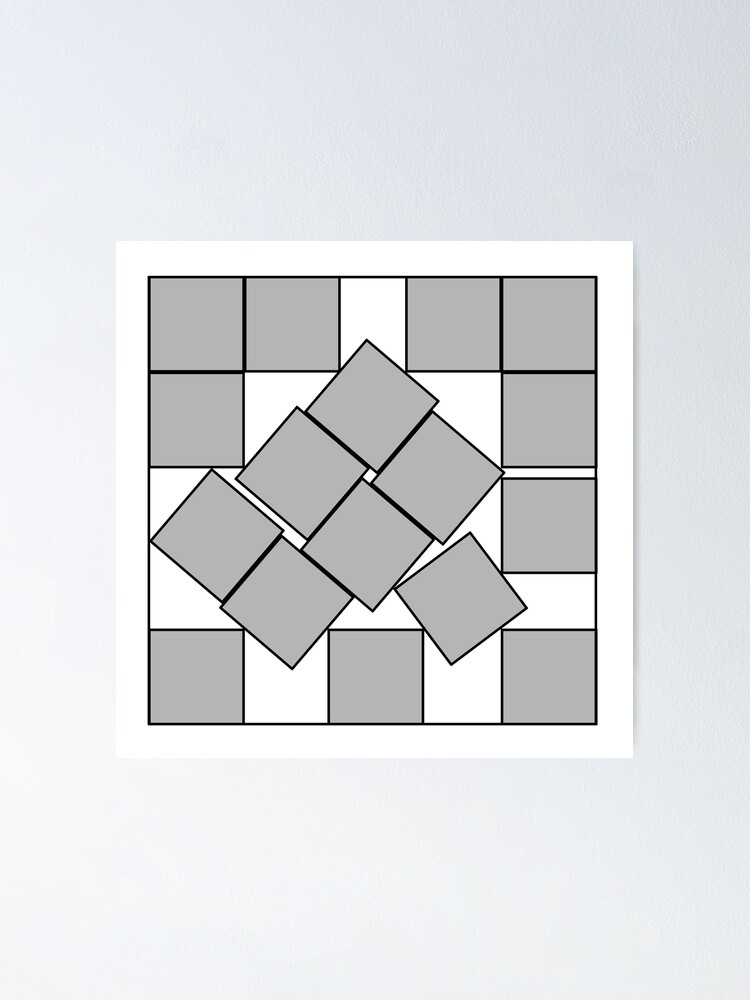With straight diagonal lines.

A place for majestic STEMLORD peacocking, as well as memes about the realities of working in a lab.

Rules
This is a science community. We use the Dawkins definition of meme.
With straight diagonal lines.

Homophobe!
hey it's no longer June, homophobia is back on the menu
Why are there gaps on either side of the upper-right square? Seems like shoving those closed (like the OP image) would allow a little more twist on the center squares.

I think this diagram is less accurate. The original picture doesn’t have that gap
there's a gap on both, just in different places and you can get from one to the other just by sliding. The constraints are elsewhere so wouldn't allow you to twist.
You have a point. That's obnoxious. I just wanted straight lines. I'll see if I can find another.
Oh so you're telling me that my storage unit is actually incredibly well optimised for space efficiency?
Nice!
It's important to note that while this seems counterintuitive, it's only the most efficient because the small squares' side length is not a perfect divisor of the large square's.
What? No. The divisibility of the side lengths have nothing to do with this.
The problem is what's the smallest square that can contain 17 identical squares. If there were 16 squares it would be simply 4x4.
He's saying the same thing. Because it's not an integer power of 2 you can't have a integer square solution. Thus the densest packing puts some boxes diagonally.
And the next perfect divisor one that would hold all the ones in the OP pic would be 5x5. 25 > 17, last I checked.
Initially I thought 4x4 square but this is a square of 4.675 sides. Reasonable. Clever maths though.
You may not like it but this is what peak performance looks like.
Here's a much more elegant solution for 17

If there was a god, I'd imagine them designing the universe and giggling like an idiot when they made math.
Bees seeing this: "OK, screw it, we're making hexagons!"
Fun fact: Bees actually make round holes, the hexagon shape forms as the wax dries.
Can someone explain to me in layman's terms why this is the most efficient way?
These categories of geometric problem are ridiculously difficult to find the definitive perfect solution for, which is exactly why people have been grinding on them for decades, and mathematicians can't say any more than "it's the best one found so far"
For this particular problem the diagram isn't answering "the most efficient way to pack some particular square" but "what is the smallest square that can fit 17 unit-sized (1x1) squares inside it" - with the answer here being 4.675 unit length per side.
Trivially for 16 squares they would fit inside a grid of 4x4 perfectly, with four squares on each row, nice and tidy. To fit just one more square we could size the container up to 5x5, and it would remain nice and tidy, but there is then obviously a lot of empty space, which suggests the solution must be in-between. But if the solution is in between, then some squares must start going slanted to enable the outer square to reduce in size, as it is only by doing this we can utilise unfilled gaps to save space by poking the corners of other squares into them.
So, we can't answer what the optimal solution exactly is, or prove none is better than this, but we can certainly demonstrate that the solution is going to be very ugly and messy.
Another similar (but less ugly) geometric problem is the moving sofa problem which has again seen small iterations over a long period of time.
Any other configurations results in a larger enclosed square. This is the most optimal way to pack 17 squares that we’ve found
the line of man is straight ; the line of god is crooked
stop quoting Nietzsche you fucking fools
Is this a hard limit we’ve proven or can we still keep trying?
We actually haven't found a universal packing algorithm, so it's on a case-by-case basis. This is the best we've found so far for this case (17 squares in a square).

It's the best we've found so far
Is this confirmed? Like yea the picture looks legit, but anybody do this with physical blocks or at least something other than ms paint?
It is confirmed. I don't understand it very well, but I think this video is pretty decent at explaining it.
The proof is done with raw numbers and geometry so doing it with physical objects would be worse, even the MS paint is a bad way to present it but it's easier on the eyes than just numbers.
Mathematicians would be very excited if you could find a better way to pack them such that they can be bigger.
So it's not like there is no way to improve it. It's just that we haven't found it yet.
Proof via "just look at it"
Visual proofs can be deceptive, e.g. the infinite chocolate bar.
I hate this so much
Do you know how inspiring documentaries describe maths are everywhere, telling us about the golden ratio in art and animal shells, and pi, and perfect circles and Euler's number and natural growth, etc? Well, this, I can see it really happening in the world.